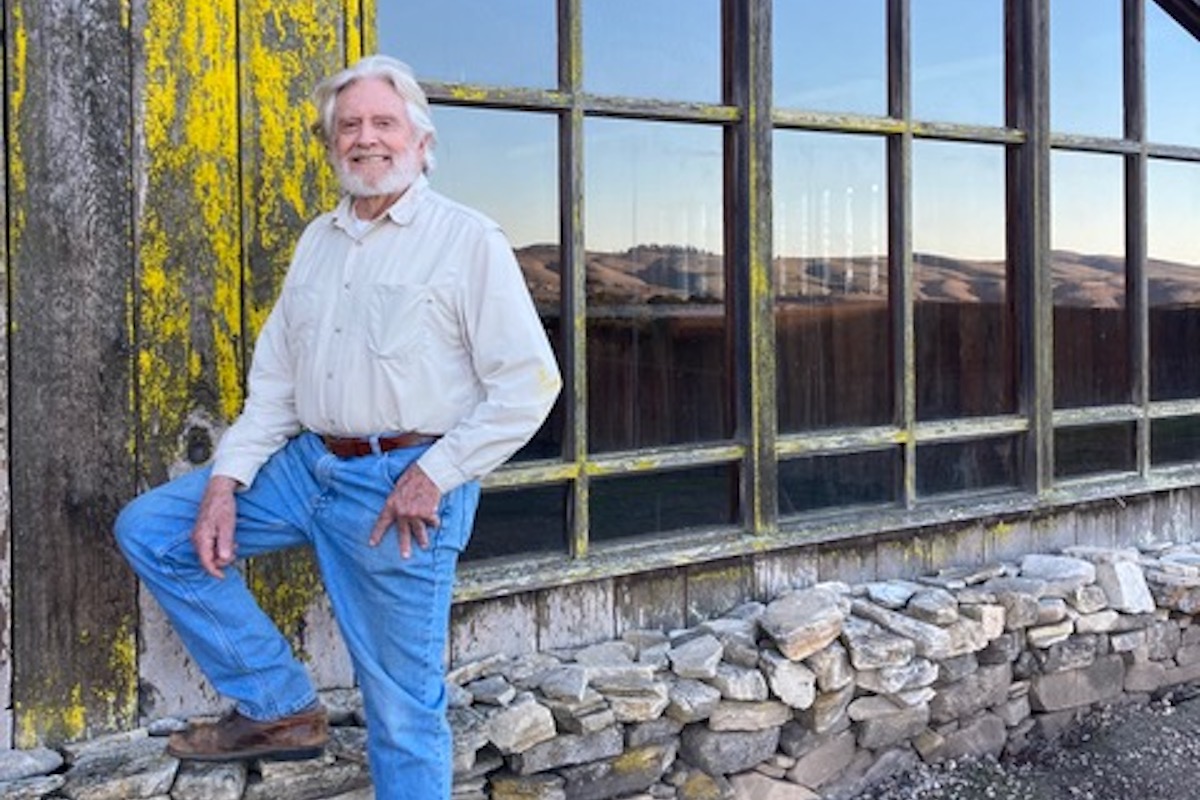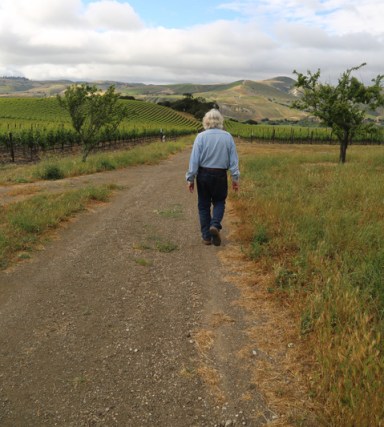
The history of wine in Santa Barbara County wouldn’t be the same without Michael Benedict. Michael had the dirt on wine and the wine on dirt. Literally. Nobody knew more than Michael about how and where grapes grow best, and nobody did more to establish vineyards that produce outstanding wines in the Santa Ynez Valley — and especially in the Santa Rita Hills AVA (American Viticultural Area).
Some of the world’s best pinot noir, chardonnay, and other wines are made from grapes grown on the Sanford & Benedict Vineyard, which Michael first planted with business partner Richard Sanford in early 1971. Sanford & Benedict wines, loved in their time, are legendary today.
Michael Benedict died in July at age 83 of melanoma. He was active and engaged with work right up to the end, and he leaves behind many friends and loved ones, including Margaret Daley — his companion and collaborator of many years — and their daughter, Morgan Benedict.
The stories about Michael as a wine guy are many. You can read them in Wine Spectator, Wine Industry Advisor, Wine Enthusiast, Fortune, Stories of the Vine, Gabe Saglie, The Grape Collective, RJonWine, Noozhawk, and many other places, including the Independent.

But Michael was far more than a wine guy. Born in Santa Monica, he became a sailor as a youth, served in the Naval Reserve, and lived on a boat in Santa Barbara when he went to UCSB, at first to study mathematics. He switched to botany after taking a course on California’s native flora.
He began work as a botanist at UCSB in marine sciences and served as the first resident manager of the university’s Field Station on Santa Cruz Island, in 1966. (The station later became the Santa Cruz Island Reserve, and it joined the UC Natural Reserve System in 1972.) This was during a time when Santa Cruz and other large islands off California’s South Coast were still owned by ranches that were gradually finding their way into the hands of the Nature Conservancy and the National Park Service. This migration of ownership was a process Michael helped guide, thanks to his strong and respectful relationships with all parties involved, including ranchers on the islands.
His work as a botanist also stretched far down the coast, into Baja California and out into the islands off that coast. It was there, on Isla de Cedros, that he discovered Dudleya pachyphytum, a rare and “undescribed” plant also called the Cedros Island liveforever. He and Reid Moran described the plant and its conditions in Cactus and Succulent Journal of America in 1981.
At that time, Michael was a research associate of the Santa Barbara Botanic Garden, to which he contributed many acquisitions to the garden’s herbarium and living collections, while also serving for a time on its board. He led or participated in botanical explorations of every Channel Island. Among his many findings was a rare species of Malvaceae (or mallow) that was thought to be extirpated (gone from a native region). In Baja California, he also rediscovered a Dudleya relative, still undescribed.

Michael was also fond of deserts and was instrumental in commercial use of species such as Salvia cedrosensis “Baja Blanca,” Malva assurgentiflora x M. venosa “La Purisima,” and Corethrogyne filaginifolia “Smart Aster.”
In the 1980s, Michael helped start the Land Trust for Santa Barbara County and served as chair of its first board. He later served on the County Planning Commission, working on mitigation plans for the All-American Pipeline in the County. In all these roles, he always advocated a balance between the competing needs for environmental conservation, open space, agriculture, business, and urban growth.
I met Michael when he and my wife, Joyce, were both on the board of the Waldorf School of Santa Barbara, and Morgan and our son Jeffrey were both students there. We have been good friends with Michael, Margaret, and Morgan ever since.
Michael and I shared a deep interest in geology, another subject of his vast knowledge. I remember standing under some oaks behind the Sanford & Benedict Vineyard (which he and Margaret always called “The Ranch”). There Michael, between pauses to name and describe one plant after another, told me that Monterey shale, best exposed in the cliffs above the Santa Barbara shoreline, was host to the region’s oil reserves at the coast while also contributing ideal soil to vineyards in the Santa Rita Hills.

Near where we stood were houses, built as Sears kit-homes a century before. None were in their original locations. “Michael moved them,” Margaret told me. “His competence was equal to any challenge.” When he and Margaret first lived there, they lit their spaces with kerosene lamps and employed the reservoirs, channels, and culverts Michael built to capture, store, and move water for domestic use and to cool the winery. Later, Michael routed electrical and telephone lines half a mile from Santa Rosa Road up to the house and office. I have treasured memories of picnics at that site and in “The Barn” nearby, where Michael made the vineyard’s first wines.
There is so much more I’d like to say, but space here is limited, so I’ll give Margaret the last word:
It’s hard to explain how deep Michael’s connection was with the earth, his profound ability to integrate the diverse disciplines of the natural world, how those melded into an understanding of the natural conditions in a place, and how that place would best be used in ways that are both beautiful and respectful of the whole environment. Michael had a persistent sense of wonder, and he patiently encouraged us all to have the same.

You must be logged in to post a comment.